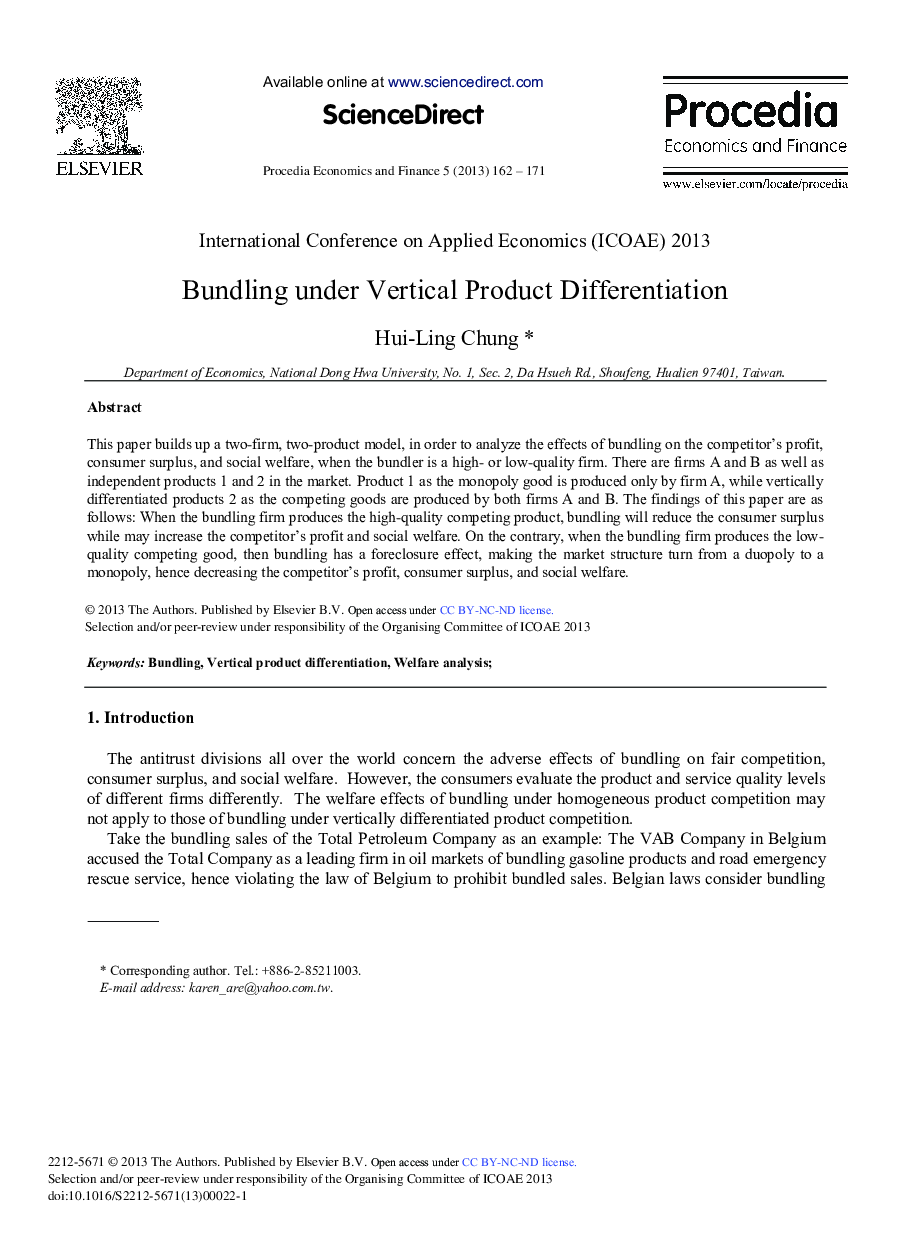| Article ID | Journal | Published Year | Pages | File Type |
|---|---|---|---|---|
| 981905 | Procedia Economics and Finance | 2013 | 10 Pages |
This paper builds up a two-firm, two-product model, in order to analyze the effects of bundling on the competitor's profit, consumer surplus, and social welfare, when the bundler is a high- or low-quality firm. There are firms A and B as well as independent products 1 and 2 in the market. Product 1 as the monopoly good is produced only by firm A, while vertically differentiated products 2 as the competing goods are produced by both firms A and B. The findings of this paper are as follows: When the bundling firm produces the high-quality competing product, bundling will reduce the consumer surplus while may increase the competitor's profit and social welfare. On the contrary, when the bundling firm produces the low- quality competing good, then bundling has a foreclosure effect, making the market structure turn from a duopoly to a monopoly, hence decreasing the competitor's profit, consumer surplus, and social welfare.
